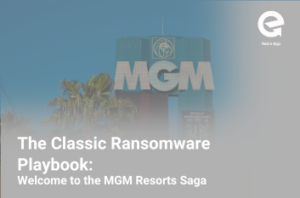Messaging apps have now joined emails as one of the most overused and abused ways that people communicate in the workplace. As a result of this overuse, many workers have message fatigue and just ignore or refuse to use these mobile platforms that they describe as a nuisance and a distraction.
Many frontline employees refuse to use these tools which companies have turned to as a way to communicate with these hard-to-reach non-desk workers who don’t have a corporate email account.
So, was it a bad idea to try and connect employees? Is there simply no need or appetite for this communication? Companies were right to try to connect with these essential workers; it has been proven that if you are successful in engaging this workforce you can expect, higher retention, greater productivity, and improved culture. In summary, it’s absolutely worthwhile and necessary.
Where companies went astray in pursuing this goal was to assume that a social-messaging solution designed for entertainment and sociability would translate into a useful and structured tool to help non-desk employees do their jobs and improve their work environment. What these employees found instead were message fatigue and infinite scrolling. To get to the most critical and often-referenced information, employees had to scroll through far too much noise. Reply-all messages wasted too much time and created more stress than value.
How does one address the need for improved communication without creating more issues?
The answer lies in highly structured communications that deliver the right message at the right time to the right person. Critical to this success is leveraging a platform that empowers the ‘critical middle’ (managers tasked with supervising frontline employees) to do their job and manage their teams simply and efficiently. Case studies have proven that when this is accomplished, not only do you increase retention of this vital workforce, but performance and other key KPIs rise alongside retention.
What should you look for in choosing an employee communication platform?
The most important thing to look at is outcomes: real-world results, with high utilization rates and engagement numbers to back up the effectiveness of the platform. Don’t fall for the misleading banner-waving of company logos that use the solution; ask for reports that show adoption and usage rates. This will reveal if the workforce is being truly engaged or if the company is simply reaching a small percentage of their workforce and calling it a success. Experience has shown that when you have adoption and usage rates above 75%+, you can see and expect significant change.
Increasing communication between managers and frontline workers will improve many measurables including morale, retention, performance, and profitability, but only if it is done with a solution designed from the ground up around the needs of the non-desk workforce. This will drive the adoption and usage rates necessary to achieve the results you are looking for.
Red e App is the employee communication platform purposefully designed to overcome the challenges of keeping non-desk champions and their managers absolutely connected and undeniably supported. Get totally configurable structures, broad automation of your everyday tasks, and communication so strong it creates work trust — a deep bond between the company and the non-desk workforce so strong it increases retention, engagement, performance, and customer satisfaction.


